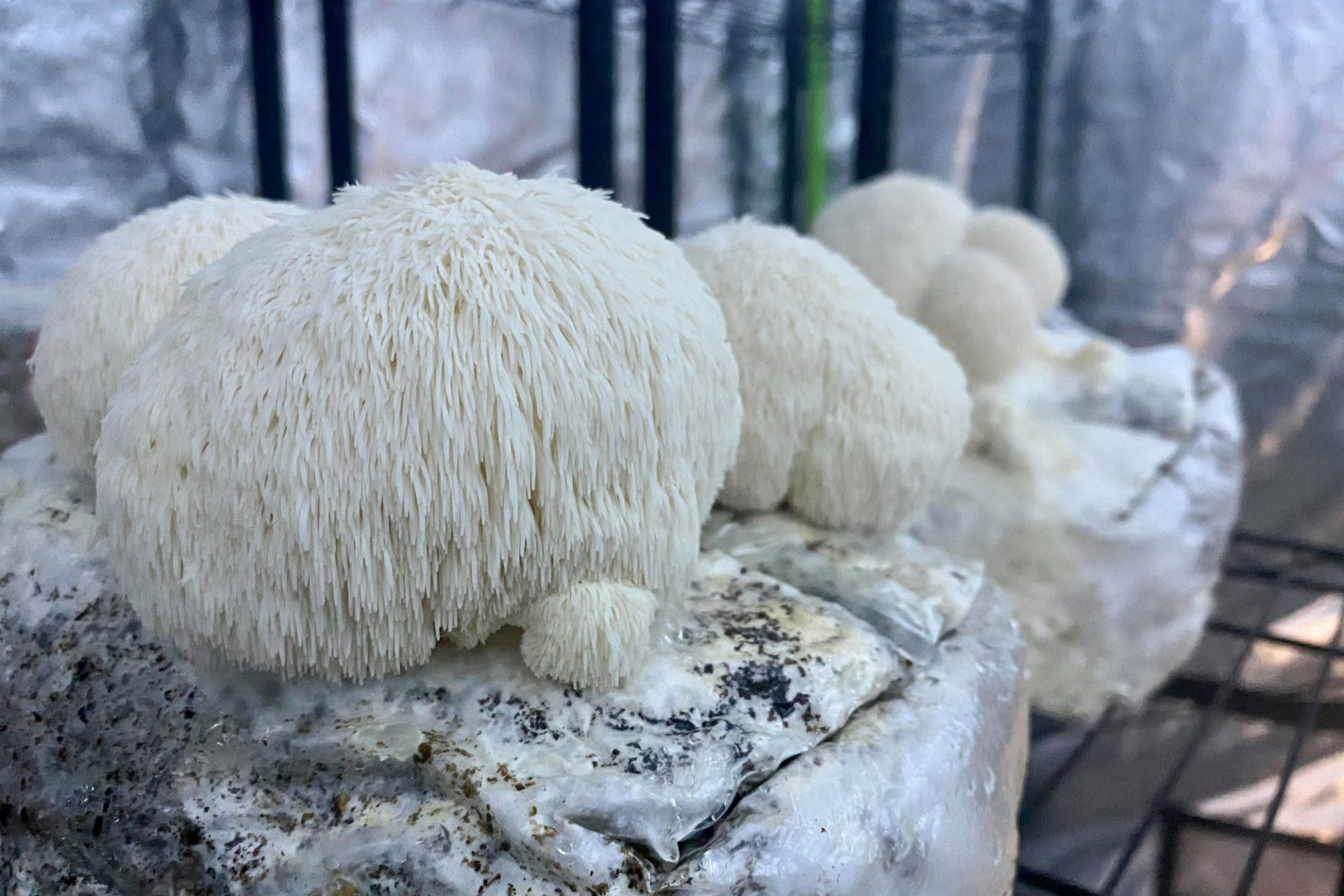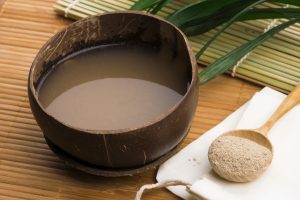Lion’s mane (Hericium erinaceus) mushrooms are a gourmet treat and a medicinal fungi that grows in temperate climates around the world, including the United States. These globe-shaped mushrooms have long shaggy spines, not unlike a lion’s scruffy mane, and their taste can resemble crabmeat, which makes it a great substitute for seafood in recipes. It is considered a nootropic (substance that improves cognitive function) and has been used in traditional Chinese/Japanese medicine for years.
Medicinal Value
Although there has not been much research on the medicinal qualities of the mushroom, lion’s mane is garnering much attention dues to its neuroprotective and anti inflammatory effects that help brain function and prevent or treat neurological diseases. One study published in the Journal of Agricultural and Food Chemistry lists the benefits by stating lion’s mane mushroom is “antibiotic, anticarcinogenic, antidiabetic, anti-fatigue, antihypertensive, anti-hyperlipodemic, anti-senescence [anti-aging], cardioprotective, hepatoprotective, nephroprotective, and neuroprotective, and improves anxiety, cognitive function, and depression.”
Whether eating them in tasty dishes or using them as a supplement in powdered form, lion’s mane is a great addition to your health regimen.
Neural Health
Lion’s mane is a valuable medicinal and is currently being studied for its effects on neural health, Alzheimer’s, and dementia. The mushroom contains a substance called erinacine, which has the ability to catalyze the production of nerve growth factor (NFG) and reduce the effects of Alzheimer’s and other neurodegenerative disorders (Yamada et al., 1997). A study in Japan, on men aged 50-80 years old with mild cognitive impairment, suggests that lion’s mane is effective at improving cognition. Subjects were split into two groups and half were given dry powdered lion’s mane three times a day and observed over 16 weeks. At weeks 8, 12, and 16, the group taking Lion’s mane scored significantly better on a cognitive test than the other half in the placebo group (Mori et al., 2008).






